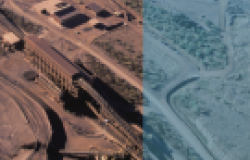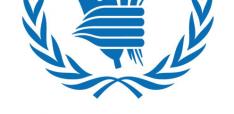Using Information to Improve the Artisanal and Small Scale Mining Sector

This post is the seventh in a series of opinion pieces from the ongoing 2016 EITI Conference, in Lima, Peru being covered on the ground by the Global Leadership Initiative's team. Please check in regularly to keep up to date with the latest news and analysis from the summit. For previous posts please click here.
The main focus of the Extractive Industry Transparency Initiative (EITI) to date has been improving transparency of large-scale extractive operations. However, in many resource rich developing countries, artisanal small-scale mining (ASM) provides livelihoods for millions of citizens. As ASM does not typically generate material revenues at the country level it is often excluded from EITI reporting. The huge potential for ASM to promote sustainable rural development has been recognised but the lack of reporting and other challenges faced by this sector mean that there are barriers to overcome before the benefits can be fully realised.
This blog post will therefore highlight how the activities of small-scale miners may be further documented and incorporated into the EITI, in order for more effective governance of the sector, and hopefully in time stimulating local development.
Why Focus on the ASM?
From a development perspective, ASM is an extremely complex sector, with many interwoven actors competing for a voice. However, according to the World Bank, the ASM sector creates many more employment opportunities than large-scale mining and provides alternative livelihoods for rural populations. Therefore their argument is that there should be a focus on increasing ASM reporting in future EITI processes for inclusion of ASM participant views.
Revenues from ASM are largely lost in a complex system due to the informal nature of the sector. This means the revenue does not come into the hands of the state, so that local ASM communities are deprived of much needed development funds. The EITI is able to provide a platform for better revenue tracking of ASM funds, which is an urgent matter in the creation of sustainable livelihoods in resource rich countries.
Furthermore, for the Democratic Republic of Congo (DRC) for example, ASM is an important economic sector with nearly 13 million people dependent on the sector for their subsistence. The large number of participants enforces the need for the EITI to use ASM data more in EITI reports, to understand transparency of the initiative to its full extent.
Problems in Collecting ASM Data
Most ASM activity is informal (illegal) in nature so activity may be concealed from official view. However, the World Bank commented that after being wary of small-scale miners being reluctant to disclose information on their mining activities, they were relieved to find ASM participants were eager to reveal the information; they hoped that data collection would lead to a more level playing field between the large-scale mining activities and themselves.
Miners are often migratory, and commonly mines are both short lived and seasonal, all of which lead to erratic patterns of mineral extraction, meaning that production is hard to track. In the Democratic Republic of Congo for example, the ASM sector differs drastically by geographical area and mineral, which adds another dimension to the difficult task of collecting ASM data.
Benefits of Incorporating ASM into the EITI
Even though the ASM sector is beneficial to rural communities as an engine of economic growth, being a major source of mineral production in rural areas, the true value of ASM is rarely captured. The EITI is increasingly looking to provide a clearer picture of the contribution of the extractive sector to the economy, which according to Mr. Acosta, the Colombian Executive Director from the National Federation of Departments is necessary for improving rural livelihoods.
In Colombia, which hopes to soon be an EITI compliant country, 90% of mining activity is classified as ASM, so once becoming EITI compliant reporting would be very un-useful without detailed data from this sector.
Furthermore, 63% of Colombian mining activities do not hold a license so Mr Acosta pointed out that these activities would be outside his authority if to become compliant as the EITI only manages legal activities.
Time to Make Progress in Formalising ASM
The anecdotes of Mr Acosta prompted discussion on a panel around ASM, to move to formalisation and legalisation of the ASM sector. Policies to allow for formalisation are necessary to separate criminal activity in the ASM sector from subsistence livelihoods. The EITI could learn from Colombia who has assigned ASM miners into seven associations assigned to specific areas, each linked to large-scale mining companies who give guidance and improve small-scale practices.
Using ASM Data More Effectively
The World Bank suggest a promising idea for making ASM data more readily accessible and therefore more useful for implementation to improve local development processes. They suggest using Geographical Information Systems (GIS) to map all relevant information such as the populations involved in ASM, those who are formalised, or in the process of formalisation, and the revenues from local ASM production. This kind of technology and therefore data is readily accessible to the masses, hopefully increasing sufficient transparency to create enough space for an informed civil society to aid bottom up processes, to allow the ASM to further contribute to local sustainable livelihoods.
Using this technology will be an effective tool in order to increase data volumes as well as transparency, necessary for the EITI to be able to increase reporting on the ASM sector.
Barriers to Overcome
Formalising ASM so that data can be more effectively used in EITI reports will not be easy. Success will require participation and voices of ASM participants, so that the lack of ASM involvement in designing policy processes is the thing of the past. Continuous local input is deemed crucial, for formalisation to be rolled out locally and progressively, in order to enhance local rural livelihoods.
Stakeholders are increasingly recognising the importance of the macro-economic contribution that the ASM can provide and therefore the relevance of ASM reporting becoming more commonplace in EITI reports is decreasing drastically.


